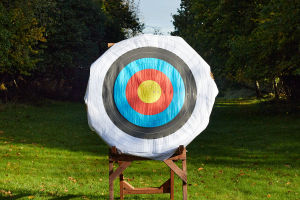Friends, ever wondered why some sprinters defy human limits as they surge down the track at speeds rivaling neighborhood traffic?
It's not magic—it's a precise interplay of muscle architecture, lightning‑fast nerve signals and carefully crafted training routines.
Deep inside the calves and thighs, distinct fiber types deliver explosive power or steady endurance under tight genetic control. This journey unpacks how tailored workouts and biomechanical tweaks turn ordinary legs into blazing speed machines.
Muscle Secrets
Within every leg muscle reside two primary fiber types: fast‑twitch and slow‑twitch. Fast‑twitch fibers are larger, generate tremendous force in milliseconds, and power explosive bursts like 100‑meter sprints. Slow‑twitch fibers are slender, fatigue‑resistant and ideal for endurance events.
Calf muscles neatly illustrate this split: the gastrocnemius yields rapid jumps, while the soleus sustains long‑distance steps. Genetic inheritance largely defines each runner's fiber mix, setting natural speed potential.
Brain Control
Beyond raw muscle power, speed hinges on the brain's command center. Motor neurons fire in milliseconds, synchronizing stride length, foot strike angle and opposing arm swing. Drills like high knees and kicks reinforce optimal neural pathways so muscles ignite in perfect sequence, squeezing every last ounce.
Even breathing techniques—timing inhalations and exhalations—enhance oxygen delivery under intense effort. At the starter pistol, honed reflexes can mean the difference between first place and second.
Training Science
Sprint improvements stem from carefully planned workouts, not endless all‑out runs. Interval sessions alternate 30‑ to 60‑meter sprints with active recovery jogs, allowing muscles to recharge while sustaining high neural activation. Plyometric exercises—box jumps, bounding drills—teach muscle fibers to contract and stretch explosively.
Strength work focuses on functional movements: weighted lunges, single‑leg squats and core bridges train the exact muscles used during the drive phase of a sprint.
Form Mechanics
Perfecting posture transforms raw power into forward motion. Upright torso alignment maintains optimal hip positioning, preventing energy loss through excessive leans or slumps. A slight forward tilt from the ankles at take‑off enhances propulsion, while gazing ahead preserves spinal integrity. During the flight phase, feet should clear the ground by a few centimeters, and arms must pump vigorously from the shoulders to stabilize rotation and maximize stride rhythm.
Recovery Benefits
Speed gains happen partly between workouts, during rest and regeneration. Short, passive rest intervals after sprint repeats help clear lactic acid buildup and replenish ATP stores for the next burst. Foam rolling and targeted stretching support muscle repair, reducing injury risk. Nutrition also plays a role: carbohydrates refuel glycogen, while protein repairs muscle micro‑tears, ensuring each session builds tangible speed improvements.
According, Dr. Edward Weiss (Exercise Physiologist & Nutrition Researcher):
"Peak speed isn't forged through effort alone. The critical window for athletic development occurs during recovery. Brief passive intervals between high-intensity efforts facilitate lactic acid clearance and ATP regeneration, priming the neuromuscular system for subsequent bursts. Complementary practices like foam rolling mitigate microtrauma-induced inflammation, while targeted nutrition—carbohydrates for glycogen resynthesis and protein for structural repair—ensures cumulative adaptations translate into measurable performance gains."
Mix Activities
Incorporating varied sports sharpens different facets of speed. Soccer and basketball drills develop quick direction changes and acceleration, engaging fast‑twitch fibers under game‑pressure scenarios. Agility ladder patterns refine footwork precision, teaching the brain‑to‑muscle communication necessary for rapid ground contact transitions. Meanwhile, hill sprints add resistance and challenge stride power, amplifying both muscular and neural adaptations for flat‑running velocity.
Youth Development
Early specialization in one sport can limit long‑term speed potential by neglecting diverse movement skill development. Children benefit from multi‑sport exposure—gymnastics, track events build coordination, balance and proprioception essential to efficient sprinting. Skill variety boosts motor learning, while reduced overuse injury rates keeps young athletes in the game longer. This broad foundation becomes the springboard for later sprint‑specific focus.
Fun Factor
Enjoyment fuels consistency, which underpins lasting speed improvements. Incorporating relay races, timed tag games or pop‑up obstacle courses turns workouts into playful challenges. Friendly competition spurs extra effort, while group sessions foster accountability and motivation. When training feels like a game, dedication follows naturally, transforming routine drills into eagerly anticipated events.
Elite Precision
World‑class sprinters smash speed thresholds—Usain Bolt hit 37.57 km/h in his 2009 100 m world record, equivalent to 23.35 mph. This pinnacle of human performance combines a near‑optimal fiber composition with flawless technique and years of meticulous coaching. Wind‑legal timing, track surface and footwear technology fine‑tune each hundredth of a second. Even at sub‑elite levels, understanding these margins empowers runners to chase personal bests with scientific insight.
Everyday Edge
Even outside the stadium, speed pays dividends: faster commute runs save precious minutes, while efficient gait reduces joint stress and fatigue. Amateur runners can set incremental objectives—trimming a second per lap or boosting stride frequency by a few steps per minute. Logging progress with timing apps and video analysis reveals subtle flaws to fix. With consistent application of science‑backed methods, anyone can outrun yesterday's version of themselves.
Next Steps
Now that the science of sprinting is demystified, which area will be targeted first—fiber recruitment drills, refined technique or recovery protocols? Challenge crafted training sessions, observe measurable gains, and adjust strategies as needed. Speed development is a layered process: expertise grows with each effort, while trust in one's body and coach fosters resilience. Lace up, set a clear objective, and watch how knowledge‑driven practice transforms pace into performance.


